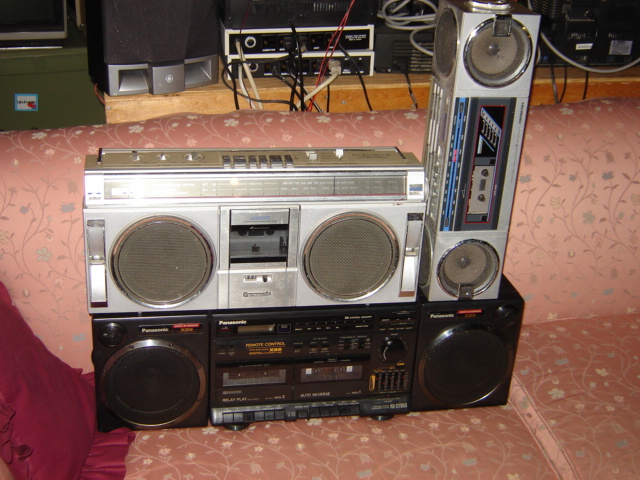Ghettoblasters and Boomboxen in the Modern Age
So for the past year or so, I’ve had increased interest in vintage boomboxes. I believe the appeal comes from the need for a powerful portable audio solution. Previous to having boomboxes, I would take a set of dc-powered computer speakers, chop off the plug, strip down the wires, and hook up a set of 9-volt batteries wired in parallel. The problem with this, however, is that 9-volt batteries are expensive, and most sets of computer speakers run on more then 9 volts of electricity. So yeah, I could mix and match batteries, but to get a reliable flow of electricity, that would require casing, and basically a bunch of wiring I didn’t want to do. So I went around with underpowered speakers that just caused problems when batter life ran short.
Now, I turn to boomboxes to do the hard work for me. Boomboxes were first introduced in the mid to late 70’s and became a facet of audio gear until their decline in the late 80’s. The appeal of boomboxes were their portability, battery life, and most important, volume. Every boombox was made to be cranked up with quality amplifiers and top of the line remixing features.
The thing that makes boomboxes accessible nowadays is the fact that the majority of them included built in cassette decks. With simple adapters purchasable at any electronics store for under $15, any new mp3 or cd player can be hooked up to a boombox, giving it whole new life and purpose.

Clockwise, mid 70’s Panasonic, mid 80’s Soundesign, late 80’s Panasonic.